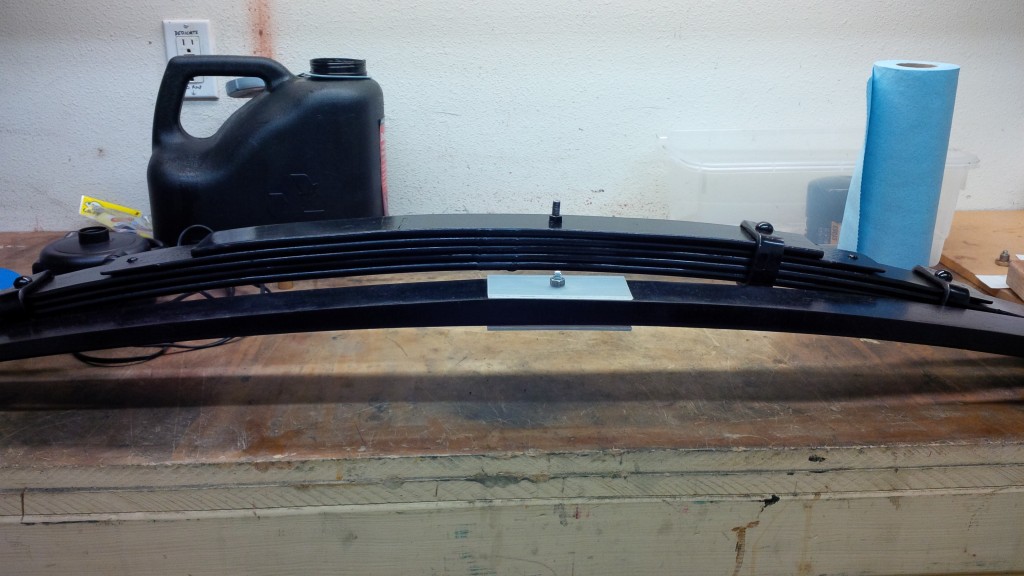+50, -70, -50, -1.5
Took some time in an effort to address some of the issues identified after Nationals last year. Despite the awful front suspension, my biggest problems centered around the rear of the car. The back end was skittish, never planted, and despite the stiff springs, axle wind-up was still a problem. In reviewing lots of video, the car basically never pushed, and there were frequent mid-corner corrections anytime there was a bump.
I sought to lower the car, make the rear more compliant, shift balance towards understeer, and improve axle wind-up if possible.
Review from before a set of Global West’s most race-oriented leafs, alongside some composites I’d had made.
The G-W springs were a classic 5 steel leaf pack – the pair is at least 50 pounds heavier (+50) than the composites…probably more like 60-70 pounds. They were also way too high – even with spacer block, the composites were too high. The composite maker couldn’t make them any lower. The problem is, I needed a leaf spring that was about flat at ride height – but the materials used in the lay-up of the composite leaf springs expect to always be in either tension or compression, and as the spring passes flat, things go the “other way”, which would damage the spring.
An advantage of the heavy steel leafs is they can have their shape changed – so that’s what I did. Found a place in town that dealt exclusively in leaf springs (thank goodness for the Camaro, trucks still use them!) and had the leaf packs de-arched by 2″. For starters with this pack I also took the smallest two leafs out, which should reduce the rate somewhat – I estimate these are about 180lb/in., where the composites were more like 250 (-70).
You’d think changing these would be easy – four bolts in front, four bolts in the middle, two in the back, and they’re all pretty accessible. But of course it wasn’t, took many evenings of thrashing and effort to get it put together right.
While I was at it, also took the opportunity to measure rear shock gas pressure, hadn’t done that yet. Found this handy gauge to help- http://www.rjracecars.com/Shock-Pressure-Gauge-214308-Prodview.html
Shock gas pressure has a number of effects on the shock’s behavior. It can act mildly like a spring, and can impact the damping forces. In further looking to “stick” the back end of the car, I reduced gas pressure from 150 (where it was) to 100 (-50).
End result looks pretty good though, rear ride height has been reduced by an inch and a half (-1.5).
Lowering the rear also lowers rear roll center, to about where other live-axle experts say it should be.
So, to sum up the changes:
- Softer rear spring rate, ~30%
- Lower rear ride height, ~1.5″
- Reduced rear gas pressure, 33%
- Lower rear roll center, ~1.5″
Plus it looks better now!



Leave a Reply
You must be logged in to post a comment.